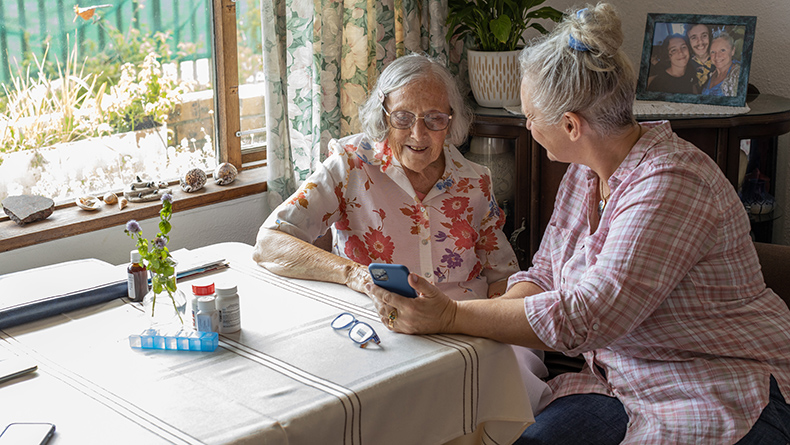AARP Hearing Center
The End of the COVID-19 Public Health Emergency and Long-Term Services and Supports: What You Need to Know
By Brendan Flinn, Tobey Oliver, March 24, 2023 10:07 AM

The COVID-19 Public Health Emergency (PHE) brought sweeping policy changes to long-term services and supports (LTSS) across settings, including service availability, operations, and financing. The PHE has also prevented states from disenrolling most enrollees from Medicaid, including those receiving Medicaid LTSS. The pause on Medicaid disenrollment will end on April 1 per recent legislation and the White House announced that the PHE will end on May 11. Together, these policy shifts will begin a process known as the “unwinding” of pandemic-era policies as the federal government, states, and providers begin to transition back to pre-pandemic policy and operations. Older adults and their family caregivers should know about these changes and what they could mean for the LTSS they currently receive or could in the future.
All Medicaid Enrollees, Including Those Receiving Long-Term Services and Supports, Will Undergo Eligibility Checks
As a condition of enhanced federal Medicaid funding since 2020, states have not been able to disenroll people from Medicaid and checks on eligibility, known as redeterminations, largely stopped as a result. Normally, Medicaid enrollees must undergo eligibility redeterminations annually. The PHE disenrollment suspension has helped millions of enrollees, including people receiving LTSS, maintain stable coverage during the uncertainty of the past three years.
The suspension will end on April 1, at which point states can begin to disenroll individuals if they are found ineligible for Medicaid during a redetermination. States can choose when to begin disenrolling people after that date, but must complete all redeterminations, including resulting disenrollments, by June 1, 2024.
The reintroduction of disenrollment to Medicaid will likely result in many current Medicaid enrollees losing Medicaid coverage. There are legitimate reasons for some people losing Medicaid coverage, such as individuals moving to a higher paying job and as a result having their income rise above Medicaid eligibility limits. More concerningly, however, people also can lose coverage due to procedural issues, such as not receiving or failing to complete paperwork in a timely manner, and thus be taken off Medicaid despite being financially and/or functionally eligible for the program.
In general, it is rare for a person receiving Medicaid LTSS to become ineligible once enrolled. Some states have already begun the redetermination process in LTSS settings and while they have not disenrolled anyone in keeping with federal law, the initial data we’ve seen shows that the vast majority (>90%) of nursing home and HCBS service recipients largely are found to still be eligible for those supports. Historically, however, even populations least likely to become ineligible, such as older adults or people with disabilities who have low incomes and high health care needs, have lost coverage for administrative reasons.
It is critical for the well-being of older adults receiving Medicaid LTSS and their family caregivers that every eligible person remains covered by Medicaid. States can take steps to minimize disenrollment, such as streamlining redetermination processes and deploying more staff to help individuals and families navigate the process.
Nursing Home Medicare Coverage and Resident Rights Policies Will Return to Pre-Pandemic Norms
Throughout the public health emergency, the federal government waived a long-standing Medicare requirement that beneficiaries be admitted on an inpatient basis (not observation) to a hospital for at least three days before Medicare would pay for a post-acute nursing home stay. Known as the “three-day stay” waiver, this shift has allowed beneficiaries to be admitted to nursing homes after shorter inpatient stays, observation stays, or even directly from home.
The end of the PHE will bring an end to this waiver, and it is important for Medicare beneficiaries in the hospital and their families to understand what this means for their care. The financial implications alone are real. Post-acute nursing home stays can easily cost several thousand dollars even if is only for a few days, and without a three-day inpatient hospital stay, most beneficiaries will be left with the bill for this care. After the public health emergency ends, patients and families should ask questions to confirm the status of their hospital stay (e.g., “Am I an inpatient or in observation?”) and if they think a post-acute nursing home stay will be needed, self-advocate for inpatient status.
The PHE also brought about changes to resident rights in nursing homes. Throughout the pandemic, nursing homes have been allowed to move residents from one room to another and to assign roommates in shared rooms specifically to minimize the spread of COVID-19 and keep residents testing positive for the virus quarantined in the facility. In normal times, residents have the right to refuse such room. Once the PHE comes to an end, nursing home residents and their families should be aware of their restored rights and know they have a say in the matter.
States Can Act to Permanently Extend Emergency Amendments to HCBS Programs
From the beginning of the pandemic, states have had the option to make substantial, emergency amendments to their home and community-based services (HCBS) programs. Virtually every state made at least one emergency amendment through this option and for the last three years, states have made changes such as adding or revising services, increasing reimbursement rates to providers, allowing family caregivers to be paid for their care work, and making typically in-person gatherings (e.g., person-centered planning meetings) virtual.
The end of the PHE will bring an end to emergency amendments of this nature, either on the date of the PHE’s expiration or up to six months thereafter depending on the HCBS authority. CMS provided guidance on which flexibilities can extend beyond the PHE, which cannot, and how states need to go about making any emergency amendment permanent.
This guidance confirmed that many of the changes states made on an emergency basis are allowed to be made permanent components of state programs. Importantly, states have the option to continue crucial supports like paying family caregivers, continuing benefits such as home-delivered meals and assistive technology, and options for self-directed services and/or budget authority.
Converting these emergency amendments to permanent status is not automatic. In order for these policies to become permanent parts of HCBS programs, state agencies need to take action and submit amendment applications and other documents to CMS.
Older adults and family caregivers who benefit from these supports should know if they are permanent or temporary, and if the latter may consider asking their respective state agencies to make them permanent components of their HCBS programs.

































































